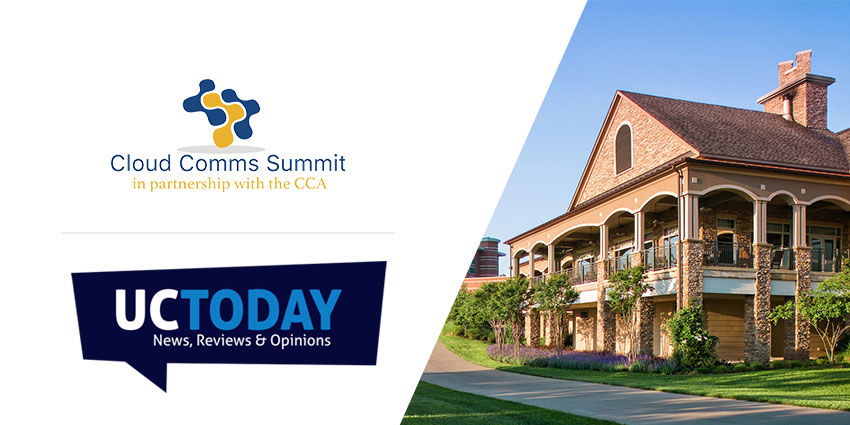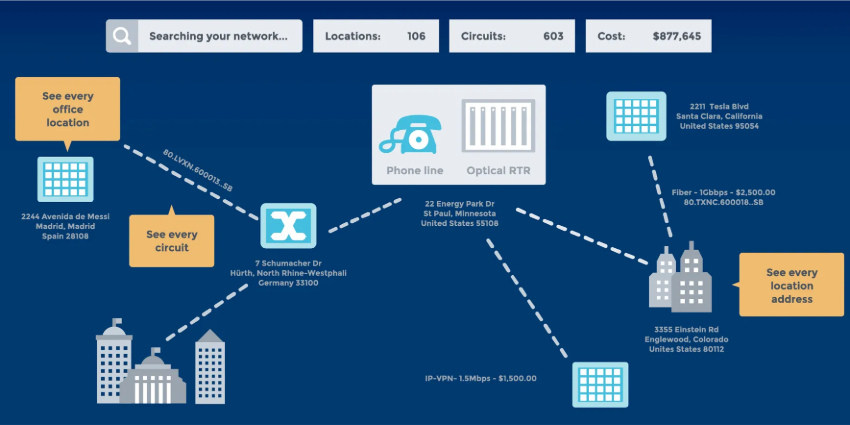The Cloud Communications industry is growing at a rapid pace.
In fact, experts predict that the market should be worth around $96 billion by the end of 2023. Here at UC Today, we like to keep on top of the evolution of the cloud communication market. That’s why we were first in line to pick up our tickets for the Cloud Comms Summit 2018 – hosted in Washington, USA.
Delivered to us by Cavell Group and the Cloud Communications Alliance (CCA), the Cloud Comms Summit is the ultimate event for Communications Service Providers (CSPs) checking out the cloud communications industry. It’s where you can go every year to gather information about industry best practices, key trends, and new vendor offerings.
As the industry continues to face significant change and substantial growth, we were keen to bring you our insights and opinions from some of the topics covered at this year’s Cloud Comms Summit – all the way from our thoughts on industry consolidation, to where we think the market is heading.
Here’s what we discovered.
The Rising Popularity of APIs and CPaaS
One of the most significant hot topics at the Cloud Comms Summit this year was the conversation around /unified-communications/cpaas, and the rise of APIs to deliver flexible services to service providers and ultimately their customers. As the “as a service” market becomes a more immersive way for companies to embrace the power of agility, CPaaS allows service providers to offer voice, video, instant messaging, team collaboration, conferencing, SMS messaging, contact centre and WebRTC as a platform for development.
In the past, developers and service providers could tap into APIs with their phone systems, but they were notoriously difficult to work with, thanks to the sheer level of education required. However, CPaaS is now giving cloud communication vendors an opportunity to accelerate the innovation that’s already happening in the UC space. You only need to look at Twilio’s success in the market to appreciate how popular CPaaS is becoming.
The idea of being able to evolve to suit the needs of their customers is something that’s particularly exciting for service providers right now, and it’s easy to see why.
The SD-WAN Opportunity: Is It Just for the Enterprise?
As part of the overall theme of agility and innovation that ran through the Cloud Comms Summit this year, I noticed a common conversational theme around the opportunities offered by SD-WAN.
Just as virtualisation helped to transform the data centre, SD-WAN is the solution helping to revolutionise the networking space. SD-WAN offers a range of strong business benefits. For instance, with this technology, you can make your network operations more efficient by ensuring you get the most out of your resources and provision services quickly.
At the same time, SD-WAN could be a powerful way for service providers to access new sources of revenue through flexible service initiation. In other words, service providers could use this technology to insert themselves in new places along the value chain and look at more than just connectivity. Add all that to the fact that SD-WAN already has strong security systems in place and a fast go-to-market, and it’s easy to see why the service provider market is excited about SD-WAN.
Right now it’s popular with large enterprises with multiple locations, however as it grows in popularity I can see it doing well for all market segments, small and large.
The Ever-Rising Presence of Disruptive Tech
It’s difficult to attend any communication conference this year without stumbling across some conversation about disruptive technology. Emerging trends like AI and IoT are leaving service providers with a lot to think about in terms of how they want to innovate moving forward, and how they can maintain security as they evolve.
Akixi, Twilio, Dubber, and Genesys were all talking about the emerging trends in the industry, and the abilities of their respective platforms to tap into things like analytics and contact centre context. In fact, analytics may be one of the most exciting things for service providers to start looking at today, in a world where data and customer service are so important. Organisations of all shapes and sizes are beginning to embrace speech analytics, natural language processing (NLP), and other data-capturing devices to make the most out of their interactions with end users.
Predictive analytics even means that modern enterprises could use technology to develop insights into the future by looking at their previous performance in areas all the way from service level, to call volume, customer satisfaction, and predictive analysis. Service providers could even use the same predictive technology to help them determine what kind of services their clients will need at certain points throughout the year.
The Over-Riding Theme: Vendor Agility
Perhaps the most important theme at the Cloud Comms Summit this year was the importance of vendor agility. As the marketplace continues to grow, with new competition, new entrants, and further consolidation, vendor agility is key, therefore service providers backing big and slow vendors is not such a good move. If a vendor can’t evolve fast enough, then service providers risk losing their clients to younger and more nimble platform providers.
Today, meeting customer expectations is a moving target for many vendors and service providers alike, as client needs continue to change. Agility has become a critical tool in the digital environment. In fact, an agile approach can help to ensure that your end customers reduce the “rip and replace” problems associated with migrating entire legacy systems into the cloud.
Whether it’s the threat of emerging “Megabrands,” or a growing need for attention around user adoption and user experience, the key to success this year seems to be focus and agility from end to end for both vendors and service providers.
A Few Side Points
Interestingly, team collaboration tools and collaboration strategies were barely mentioned during the comms summit this year. While making money out of collaboration seems to be a hot topic throughout the industry, it may be something of the elephant in the room for CSPs. At the same time, there wasn’t much mention of hybrid cloud, which was somewhat surprising considering the Cloud Comms Summit is a cloud event.
Paying attention to what we didn’t hear at the conference this year can prompt a lot of questions, but it’s difficult to know whether a lack of conversation is a good thing, a bad thing, or simply a sign that certain topics have become so immersed in today’s environment, that they’re not worth discussing anymore. For instance, security and compliance didn’t get much of a mention this year, and that could be a good thing – indicating that everyone is working harder on their security strategy. Of course, there was a question at the end of the summit about “Who will be the first to get breached.”
Additionally, there was very little conversation about the concepts of CX and DX, although it’s safe to say that both things are still very important. For anyone embracing cloud communication technologies, there’s always going to be a focus on digital transformation and customer experience.
Market Predictions for Cloud Communications
During the final panel at the Cloud Comms Summit, there was a fantastic discussion about where the marketplace could be heading in the coming years. Most experts agreed that we’re seeing a far more rapid adoption of cloud Communications this year, and that’s something that will continue to accelerate in the years ahead. At the same time, there’s going to be a strong focus on the importance of user experience, and mobile-first solutions for simpler, more efficient communications.
The panel noted that while the contact centre is still 95% on-premises, there’s a good chance that this will change going forward, as people continue to concentrate on the importance of customer experience. Analytics, AI bots, virtual assistants, and of course, the omnichannel approach will begin to push more companies into the cloud. Michael Quinn from Q Advisors even suggested that we’ll have no desktop handsets anymore five years from now.
Ultimately, the marketplace will continue to transform, with a focus on personalisation wherever integration and build-your-own systems are available. It seems that the cloud communications space is ready to face a lot of momentum, and the drive for greater flexibility.
Matt Townend of Cavell Group summed up
“We are very pleased with the success of the event as our first US Summit and we look forward to inviting the key Cloud Communications players back to London for our next show.”
What next?
The Cloud Comms Summit will be returning to the US next year mid-september, but stay tuned for announcements on the next edition at the QEII in London on 7th March, 2019.







